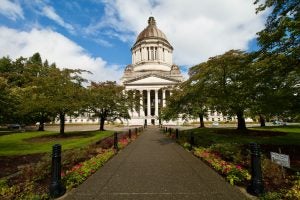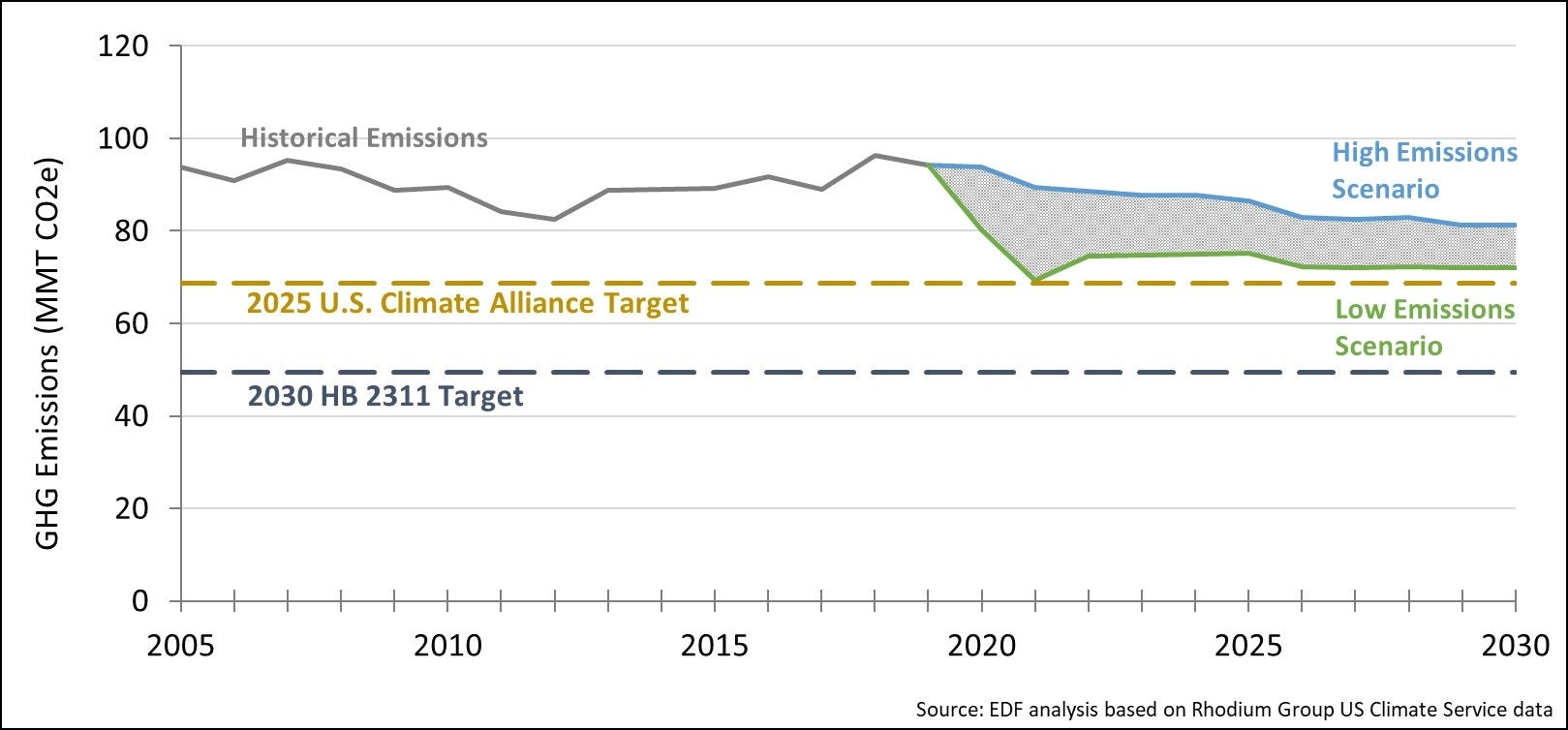
Washington state can make good on its climate promises and close the emissions gap
Editor’s note: This post was last updated Jan 12, 2021.
After a harrowing year, which included a record-breaking wildfire season in Washington that burned over 700,000 acres, Washington state lawmakers now have the opportunity to make meaningful climate progress in the new 2021 legislative session. Governor Inslee recently unveiled a comprehensive legislative framework for the upcoming session, which focuses on securing reductions in climate pollution consistent with the state’s science-based reduction targets. The package proposes a Clean Fuel Standard, doubles-down on curbing pollution from buildings and investing in clean energy, and critically, includes a firm, declining limit on greenhouse gas emissions that can guarantee pollution is slashed in line with Washington’s climate goals. The proposal also centers environmental justice by ensuring that frontline communities have a prominent role in designing policy and climate investments. Governor Inslee’s leadership is welcome news following the release of a report by Environmental Defense Fund which shows that states with climate commitments, including Washington, are off course for bringing their emissions down consistent with science-based trajectories for 2030.
Swiftly adopting policies capable of driving reductions persistently over the next decade is essential. According to the Intergovernmental Panel on Climate Change (IPCC), reducing global emissions to around 45% below what they were in 2010 by 2030 and continuing to reduce emissions dramatically through 2050 is consistent with a path that can avert devastating impacts of climate change. In other words, securing significant and immediate reductions in climate-warming pollution can reduce long-term climate damages, like longer and more severe wildfire seasons.
Understanding Washington’s “emissions gap” will be critical for assessing how the state can deliver concrete policy action that is capable of safeguarding the state’s health, economy and ecosystems for years to come.
Washington state’s progress on emissions
As one of the three founding members of the U.S. Climate Alliance in 2017, Washington showed early leadership on climate change in the wake of federal inaction under the Trump administration. Earlier this year, state legislators updated Washington’s targets to reduce climate pollution by 45% below 1990 levels by 2030, and 95% below 1990 levels by 2050. However, the legislature stopped short of adopting a policy framework capable of achieving these reductions or directing regulators to develop regulations to ensure that emissions declined consistent with these goals — unlike legislators in Colorado, New York, New Jersey and Maine, who provided clear instructions for implementation in 2019. Washington is still missing the policies that can drive emission reductions across the economy, guaranteeing that the state reduces pollution consistent with these reduction targets.
Washington also took an important first step with the Clean Energy Transformation Act in 2019, but meeting the climate goals will require strong action from every sector of the economy. And despite important efforts to put the power sector on a trajectory to 100% clean energy, Washington will need to adopt additional policies to achieve reductions consistent with these targets.
With this current suite of commitments and policies in place, EDF analysis shows that Washington is projected to reduce emissions between 25% and 35% by 2030, rather than the needed 45% reduction below 1990 levels. This amounts to an emissions gap in 2030 between 23 and 32 million metric tons of carbon dioxide equivalent, depending on the pace of recovery from the pandemic.
Washington Economy-Wide Gross GHG Emissions and Targets
The state is also off course for achieving the original U.S. commitment under the Paris Agreement in 2025: 26% below 2005 emissions. Overall, the analysis finds that the state will not curb emissions at the pace and scale needed, if legislators do not adopt additional policies.
Closing the emissions gap
There are several possible policy solutions that can close this emissions gap, but there are some key features that are needed, and the proposal unveiled by Governor Inslee seems to hit all the marks:
- Establish a declining, enforceable limit on GHG emissions: These limits should serve as a backstop, covering emissions from all of the state’s major sources of pollution, and can be source based, sector based or applied across multiple sectors. The governor’s proposal covers the largest-emitting sectors in Washington.
- Ensure environmental and economic benefits are directed to disproportionately-impacted communities: Alongside and as part of an emissions limit framework, Washington must ensure that benefits from investments in a clean energy future, including in reducing transportation emissions, are directed to communities most overburdened by pollution and to communities impacted by the transition away from fossil fuels. The governor’s proposal takes an important first step toward ensuring these investments are directed to the communities who need them the most, and relies on the recommendations of the Environmental Justice Task Force to guide these investments.
- Evaluate progress based on emissions metrics: Thanks to the science-based climate goals established by the legislature, Washington can ensure the climate policy framework proposed by Governor Inslee secures reductions along a trajectory that declines immediately, and persistently, over time. An essential feature that must be included in the governor’s proposal is regular evaluation of climate policy to ensure that it is delivering the necessary results — and to course correct as needed to ensure goals are met.
- Consider an approach that puts a price on pollution: If well designed, using a carbon price to help meet pollution limits can enable much greater ambition by securing the most cost-effective reductions, jumpstarting innovation and accelerating early action — which critically will help maximize cumulative emission reductions. Governor Inslee’s plan includes a price on carbon which will enable significant investment to address environmental injustice and support the as-yet-unfunded Working Families Tax Credit.
- Catalyze the development and deployment of clean technologies: Supporting the ongoing adoption of performance-oriented policies can accelerate the development and deployment of clean technologies and create new clean energy jobs. Measures like a Clean Fuels Standard can also make limits on pollution easier to achieve over time.
While Washington has a looming greenhouse gas emissions gap that indicates it won’t meet its 2030 goal with current policy, the good news is that Governor Inslee is stepping up to the plate. By putting a comprehensive policy framework in place, his package can get Washington on track to close that emissions gap. Now, it’s time for the legislature to take the next step, by adopting that framework and turning it into action that is capable of delivering the crucial emissions reductions needed in this deciding decade. Only then, can Washington truly be on a pathway that will help avert the worst of the climate crisis.










